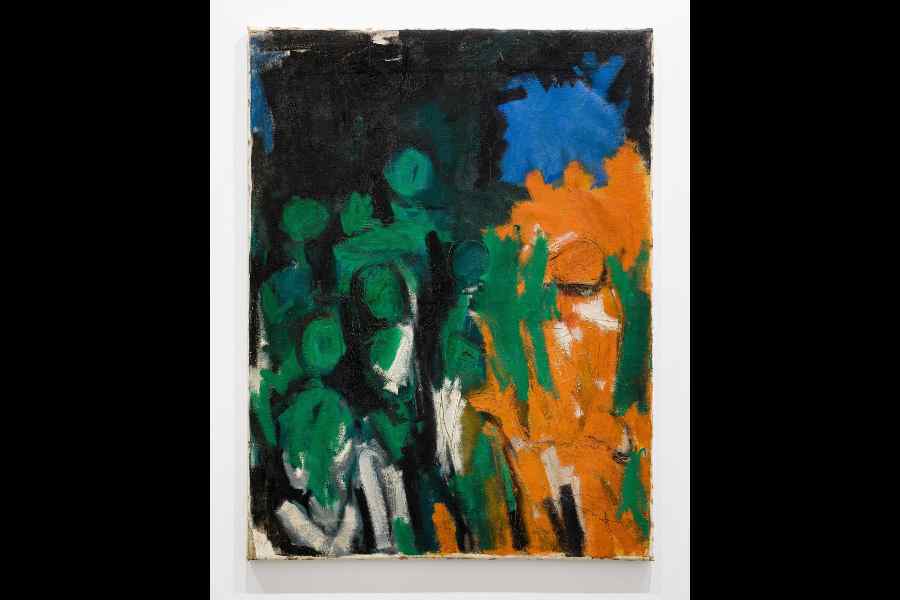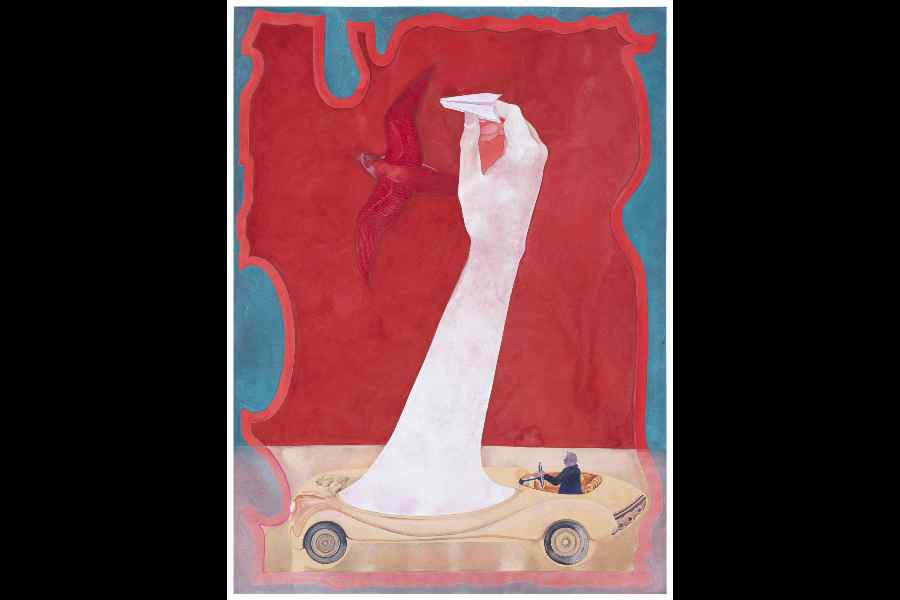Art Exposure’s recent opening exhibition, Miracle of Absence: The Embrace of Time (curated by Gayatri Sinha), featured 12 artists. They included, among them, Shambhavi Singh and T. Venkanna whose lush work leaves a lot to the imagination. The works of these two are rarely seen here.
One could not help noticing Abir Karmakar’s trompe-l’œil artwork. It had metamorphosed the gallery into a middle-class home. Mithu Sen’s work was among the most sensitive drawings created entirely with countless pinpricks on virginal white khadi handmade paper. The lacerations with traces of red were suggestive of violence. Her works are an embodiment of a paradox: they are as corporeal as they are ethereal. They need to be carefully displayed. When backlit, they take on a dramatic form as the drawings come alive. Otherwise, they look limp.

Reba Hore Group 1 Experimenter
Equally intriguing are the works of Anandajit Ray with their impossible coupling of disparate objects (picture, left). They may remind one of the idiosyncratic works of masters like Hieronymous Bosch and Brueghel and the Jahangiri miniaturists as well, although Ray’s paintings are far from imitations. What comes through is his sardonic sense of humour. Buddhadev Mukherjee’s innumerable tiny and simple cartoonish figures of ordinary folk, including members of the working class, keeping themselves busy had a touch of eccentricity. His art, too, is marked by the juxtaposition of unlikely objects and animated beings. The artist possibly recalls the nonsensical humour of Sukumar Ray’s “Abol Tabol”. The other art historical references — Duchamp for sure — cannot be missed. It’s a mad and buzzing world cut off from a workaday existence that he conjures.
Amitava taps into the archive of his memories to create those often spindly forms like large lobster legs with protuberances on their shells. They appear to be tantalisingly close to familiar things yet they are impossible to identify. Here he had displayed a series of small, delicate drawings that had the fragility of crystalline forms. Then there were those enigmatic black-and-white drawings with a dark heart and finely articulated forms that suggested vegetal matter in one and a collage of found objects in another. Beyond definition, they belong to the realm of imagination where the most unlikely things can come together. Which is why words fail to analyse these forms. This is possibly what the curator intended.
Reba Hore (1926-2008) must have left behind a substantial number of works for these are being exhibited from time to time at different galleries. Experimenter’s Do You Know HowTo Start a Fire? was, however, exceptional. For apart from crayons on paper, there were some watercolours and pastels on paper and oil and wax and linseed tempera on board and canvas as well.
As in her other drawings, thereare knots of human figures with undefined faces but each form is sharply etched with deep, black lines, often a flurry of them. What stands out are the smouldering colours in violent contrasts that burn like hot coals (picture, right). What a riot of colours she used — viridian, orange, yellow, ultramarine, red. Even where the colours are muted, the passionate yearning to express her intense emotions spontaneously enlivens her work. The canvases are rather large and the urgent need to find fulfilment is quite evident fromthe abandon with which she attacks space. By contrast, the still life is calm and serene.











